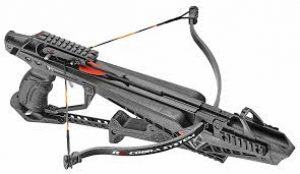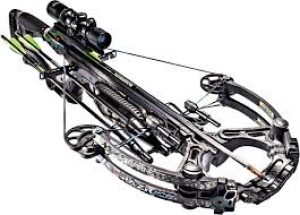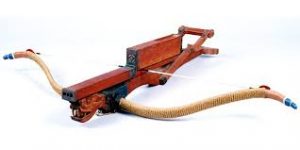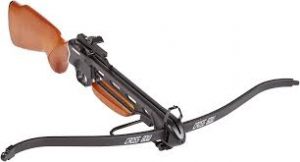The different styles of bows available on the market today use entirely different methods of construction and are designed for particular uses by reason of their design. Gaining knowledge of these distinct styles can benefit you when you search for a bow, and you can pick from an informed perspective what to choose. See also our suggestions on best crossbow for hunting, Crossbow safety and maintenance guide, Crossbow bolts for hunting, best compound bows.
Different types of Crossbow
Recurve Crossbows

The recurve bow claims to be the oldest crossbow ancestor of recent times. The name is inspired by the delicate curves defining the ends of the bow that point away from its user. Such curves perform the essential task of holding the string in place to prevent it from flicking out. We do this by straining and locking the string in and thereby ensuring the safety of both the user and the equipment.
The modern-day crossbow is made of a Magnesium or Aluminum alloy or carbon fiber, so it is still really simple to target. They typically have a longer draw duration than most of the other bows, a function that enables them to give the projectile greater acceleration.
They are often loud when shot because of the great pressure imposed by their duration on the bow. This is suitable for hunting expeditions that require significant power and speed, for example when targeting big animals. It is also ideal for long-range shots and is a favorite for professional hunters.
The main disadvantage they have is that the design puts a significant burden on the string and thus may mean the need to keep purchasing new strings until you invest in a really good quality one. Additionally, recurve crossbows are very wide and often difficult to carry around in the forest.
Compound Crossbows

The compound crossbow features a more complex design than a recurve and is therefore more difficult to install for the first time. Interestingly, however, it is much easier to use and is therefore an extremely popular choice for hunters. Compared to the recurve, its design is characterized by much shorter limbs yet they are all sturdy.
Due to their stiff construction, they are renowned for their strong energy-efficiency. Similarly, compound crossbows use synthetic material to improve durability. This bow is renowned for precision and is resistant to weather adjustments as a result of the design.
The compound crossbow features a string attached to a pulley mechanism and linked by the same device to the second extreme point. The pulleys turn when the string is drawn back and the cables move to bend the limbs, saving lots of energy for the shot and making it a very fast shooter.
Another benefit of describing this weapon is that due to its fast draw range, they are simpler to use. They are also quite compact, smaller than recurves, and can, therefore, be used easily in limited space. The model minimizes vibration and recoil, making the bow very accurate and not so loud, making it suitable for professional hunters.
However, these bows are much heavier than the recurves, so a special device to control is needed when they split a string. They can not handle impact so well so when dropped frequently, they lose precision quite quickly. The numerous parts of these bows mean that its maintenance is rather complicated and wear and tear also happens quite fast.
Click here for Best Compound Bows
Repeating Crossbows

The repeating crossbow is one of the simplest to use, as a simple action is required to conduct a shot. With this single motion, all other moves are begun making it one of the most convenient crossbow choices available. It is claimed to be able to shoot three times faster than a regular crossbow, so it is the perfect option when speed is important.
It makes repeated shots as many times as in the others whose single shot is do-or-die. Therefore, it offers a simple solution for beginners who may not want to put in all the effort they need to be an archer.
Yet since the technology behind it is all mechanical, it takes all the fun out of hunting, because nearly all are outside the reach of the user. There’s no way to improve its performance, and so it doesn’t need any technique to master its use.
Rifle Crossbow

This is a modern-day hybrid combining the high points of ordinary crossbows and the rifle conveniences to make the ultimate instrument of hunting. Just like the rifle, the greatest strength of this crossbow is precision, a quality enhanced by its superior capability of aiming.
Such bows combine advances in technology such as impressive sights, a high duty fiber-based design, and a foot-pull. They are built for long-range hunts and may guarantee precision shots from as far as 250 feet away.
These are much narrower than the other crossbows on the market and will reach a range of just six inches. This means that even the narrowest of spaces in heavily forested areas can penetrate, giving you a great perspective on your unsuspecting prey. The rail design is top-notch which makes it possible for the rifle crossbow to launch bolts with zero friction resulting in unmatched velocity.
The drawback to this impressive weapon is that to use it and launch a bulls-eye shot takes quite a significant amount of power. This is because it takes up much more strength than most, and often requires a cocking process that is fairly complex.
Final Thoughts:
As crossbows vary according to the amount of energy required from the user, size, acceleration system, and degree of automation, make sure that your choice satisfies your needs in all aspects.
